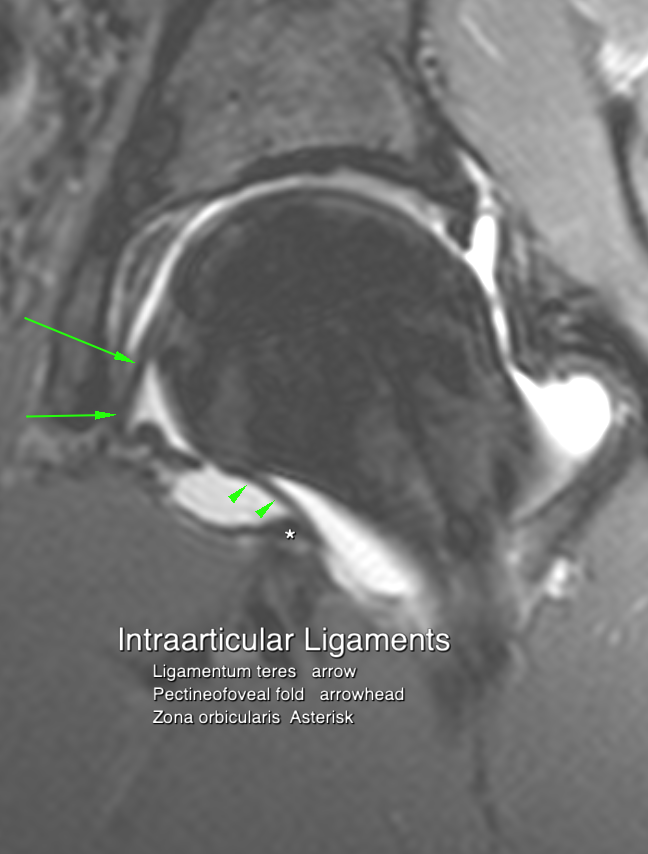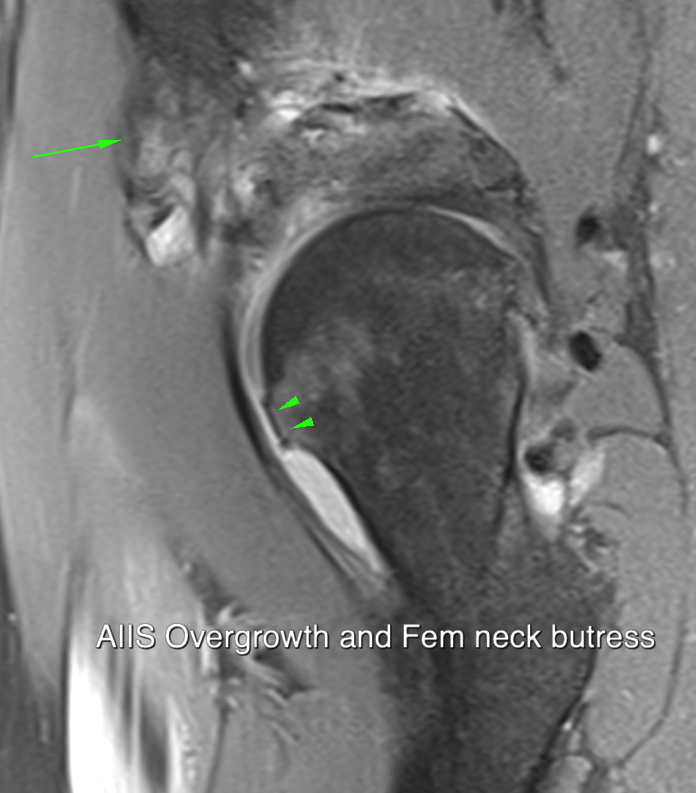Arises from and around the transverse ligament and inserts onto fovea
Surrounded by synovial sheath
Function uncertain, does have a vascular role and probably assists with hip stability
Can tear, either complete or partial and develop ganglia
Hyperabduction and flexion may lead toinjury
Can be torn, degenerate and develop cysts
Narrowing of the space between the ischium and lesser trochanter may lead to symptoms.
In some cases, patients complain of pain.
In others there is at palpable or audible click or grating on walking.
Probably ore common in women
Some plain xray findings are noted, ischial enlargement and sclerosis
But xray rotation can create spurious findings
The imaging hallmark is narrowing of the space on axial MRI.
13mm has been suggested as a measurement, but the range is wide (5mm) Occasionally increased signal is identified within the quadrants femoris muscle.
In long-standing cases, muscle atrophy may be present.
Not all patients with narrowing of the IF space are symptomatic
US or CTguided local anaesthetic block may help distinguish IFI from other causes of pain
Surgical options include resection of lesser trochanter and ischium
Possible syndrome but not confirmed
Related to the medial synovial fold in the inferior joint
No convincing MRI findings as some supposed positive findings are also found in asymptomatic individuals
Extra-articular cause of impingement
Impingement of direct RF head against the femoral neck
Look for an enlarged AIIS - various types described
Grinding senstion on flexion and lateral translation
Possible prior history of RF avulsion
Look for :
• acetabular retroversion
• elongation/hooking of AIIS
• AIIS below the anterior sourcil
• Cysts on anterior femoral neck
See separate section - link on the side menu



